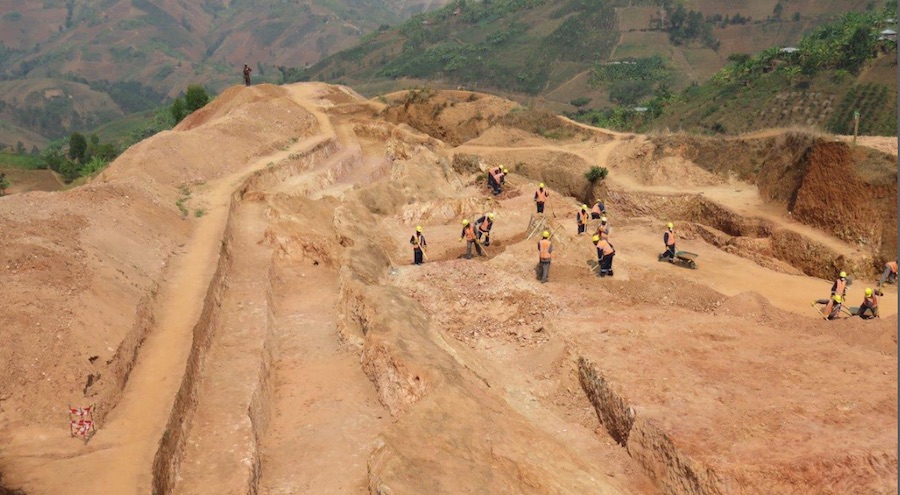High-grade rare earths confirmed at Burundi prospect

Stories about rare earths mining are few and far between with rare earth oxide prices having slumped for the past few years, but one project in East Africa is piquing the market’s attention.
Rainbow Rare Earths has made significant progress to date on its Gakara rare earths project in Burundi, including the release on Thursday of some high-grade drill results:
Laboratory testing recently undertaken in respect of its ‘main vein’ at Gasagwe has returned an average Total Rare Earth Oxide (“TREO”) grade of 62.17%. Gasagwe is the area within the Company’s 39km2 mining licence which is expected to provide ore for the first two years of production, which is targeted to commence in Q4 2017. The grade compares extremely favourably to the average grade of 57% contained within mineralised veins across the Company’s Gakara Rare Earths Project in Burundi (“Gakara”) as disclosed in the Competent Person’s Report compiled by MSA contained in Rainbow’s IPO Prospectus published in January 2017.
The IPO raised $8 million and about $6 million has been invested into the project so far. The company expects first production in the final quarter of this year, starting with 3,900 tonnes of concentrate during the first two years and ramping up to 5,000 tpa thereafter.
The Gakara project was mined on a small scale from the 1930s to the 1970s, according to CEO Martin Eales. Rainbow received its first exploration license in 2011 and in 2015 was granted a 25-year license from the Burundi government, which holds a 10% share in the project. The company has also secured a 10-year offtake agreement with metals trader thyssenkrupp Raw Materials, according to Mining Weekly.
Total in-situ are earth oxides are estimated to be in the range of 47 to 67%, which would make it one of the highest-grade rare earth projects in the world. According to a project page Rainbow Rare Earths is targetting 20,000 to 80,000 tonnes of “vein material with upside potential” and has identified 408 veins to date on its 135 square kilometres of licenses. The veins contain bastnaesite and monazite minerals.
The $2.5 million project, including processing plant and truck fleet, would process the run-of-mine ore at Kabezi, about 20 kilometres away. The concentrate would be exported either from Mombasa or Dar es Salaam.
More News
Manganese X poised to begin pre-feasibility study at Battery Hill
April 11, 2025 | 02:39 pm
Carbon removal technologies could create tens of thousands of US mining and quarry jobs – report
April 11, 2025 | 01:33 pm
{{ commodity.name }}
{{ post.title }}
{{ post.date }}




2 Comments
Kenneth Viney
Owners should consider shipping to Nirobi instead of through Uganda. Rail transport will complete against road transport in Kenya and the politics in Uganda do not encourage investment. Looks like it could be a good project. The Lord knows the millions of folks there need the work.
Leo Neo
The country only owns 10% in a 20 years contract??:( That’s very sad what is wrong with our African governments 🙁